Abstract
1. The effects of tetanus toxin have been investigated both on central nervous and peripheral neuromuscular systems of goldfish.
2. Tetanus toxin kills goldfish when administered in minute doses. The lethal effect is temperature dependent. Unlike mammals, in which tetanus toxin produces spastic paralysis and convulsions, the tetanus-intoxicated goldfish die with an apparently flaccid paralysis.
3. Inhibition and excitation were investigated on the Mauthner cells of goldfish which had been paralysed with tetanus toxin for at least 24 hr, and which were subsequently kept alive for up to 3 days by perfusing the gills with oxygenated water. In such fish, antidromically and orthodromically excited Mauthner cells were quite normal, and there was no apparent effect on either the collateral inhibition or the crossed VIIIth nerve inhibition.
4. Local injection of sublethal doses of tetanus toxin into the pectoral fin muscles produced local paralysis of the fin. Nerve—muscle preparations were isolated from such goldfish; in tetanus toxin-paralysed fins, the muscle no longer responded to stimulation of its nerve. The nerve compound action potential was still present and the muscle still responded vigorously to direct electrical stimulation.
5. It is concluded that the major part of the lethal action of the toxin in the fish must be ascribed to a peripheral effect, the blocking of neuromuscular transmission. The inhibitory neuronal systems acting on the Mauthner cells of the goldfish, in apparent contrast to those acting on mammalian spinal neurones, are highly insensitive to tetanus toxin.
Full text
PDF

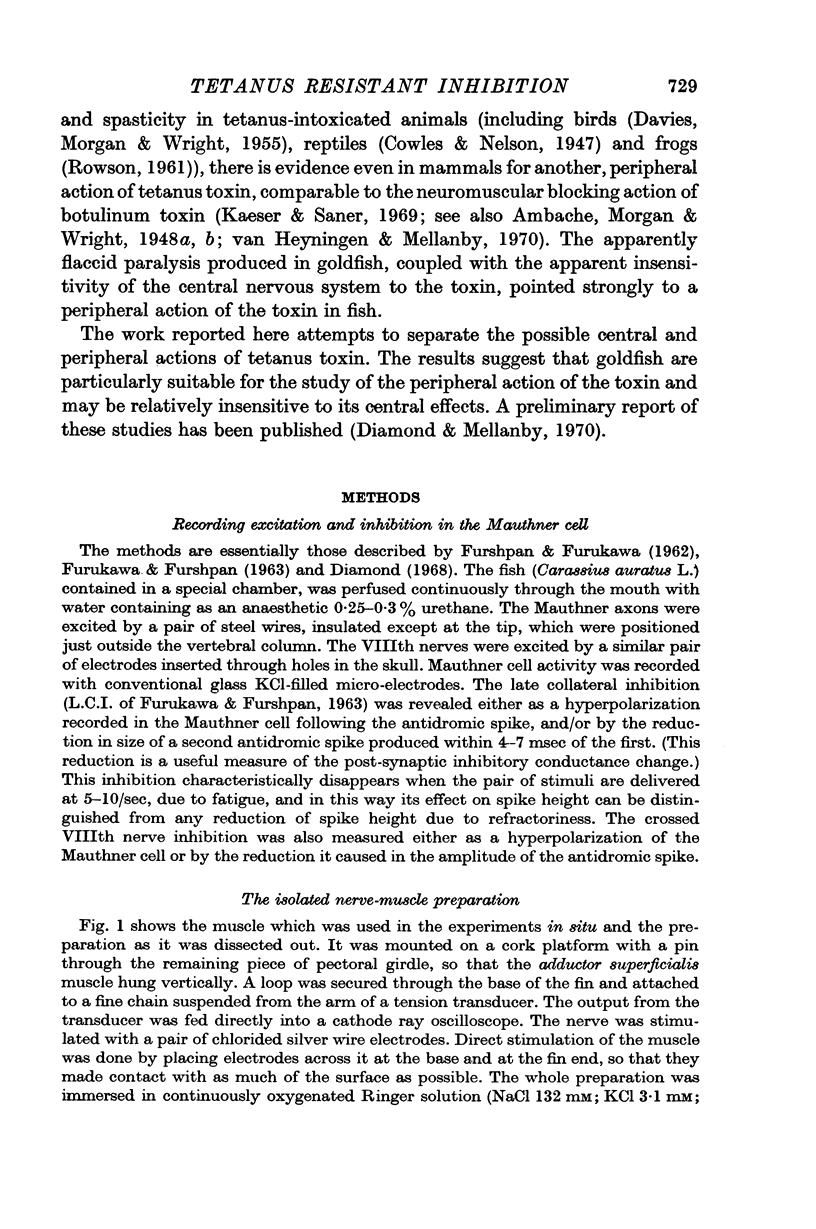


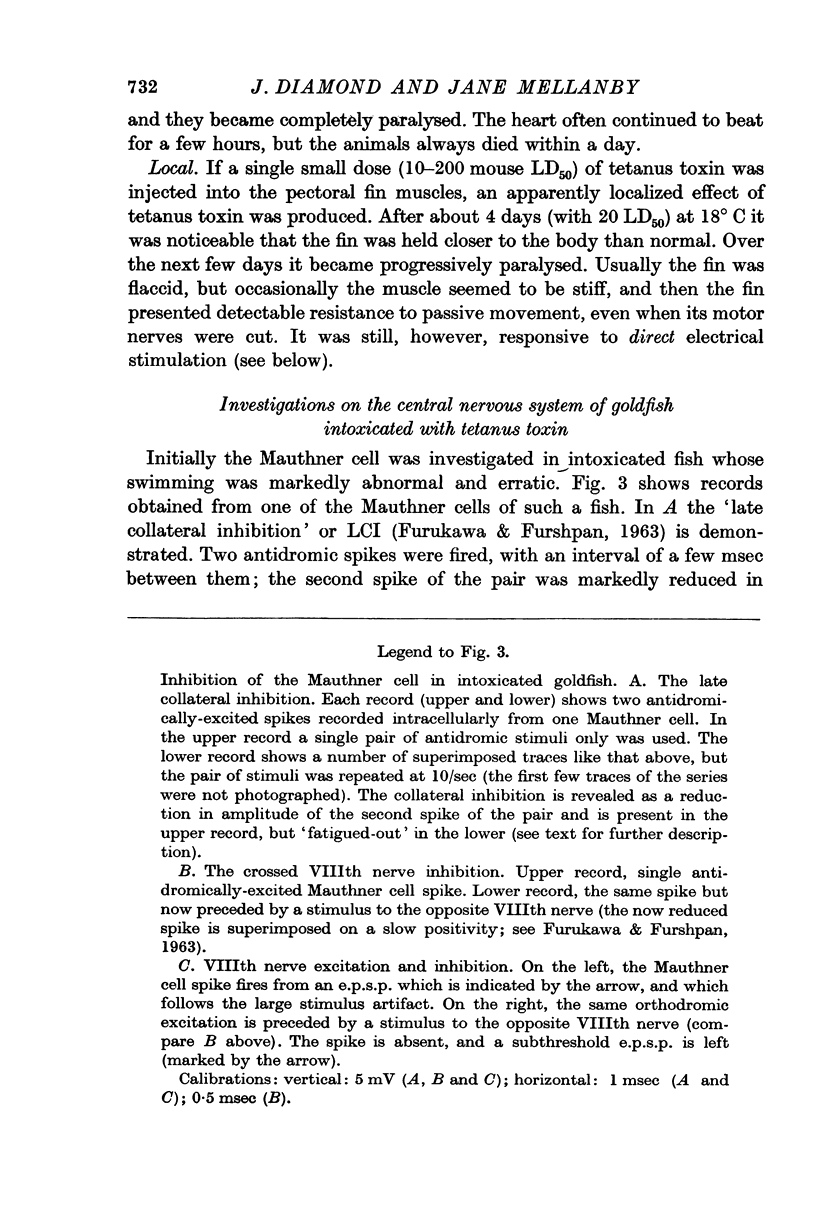

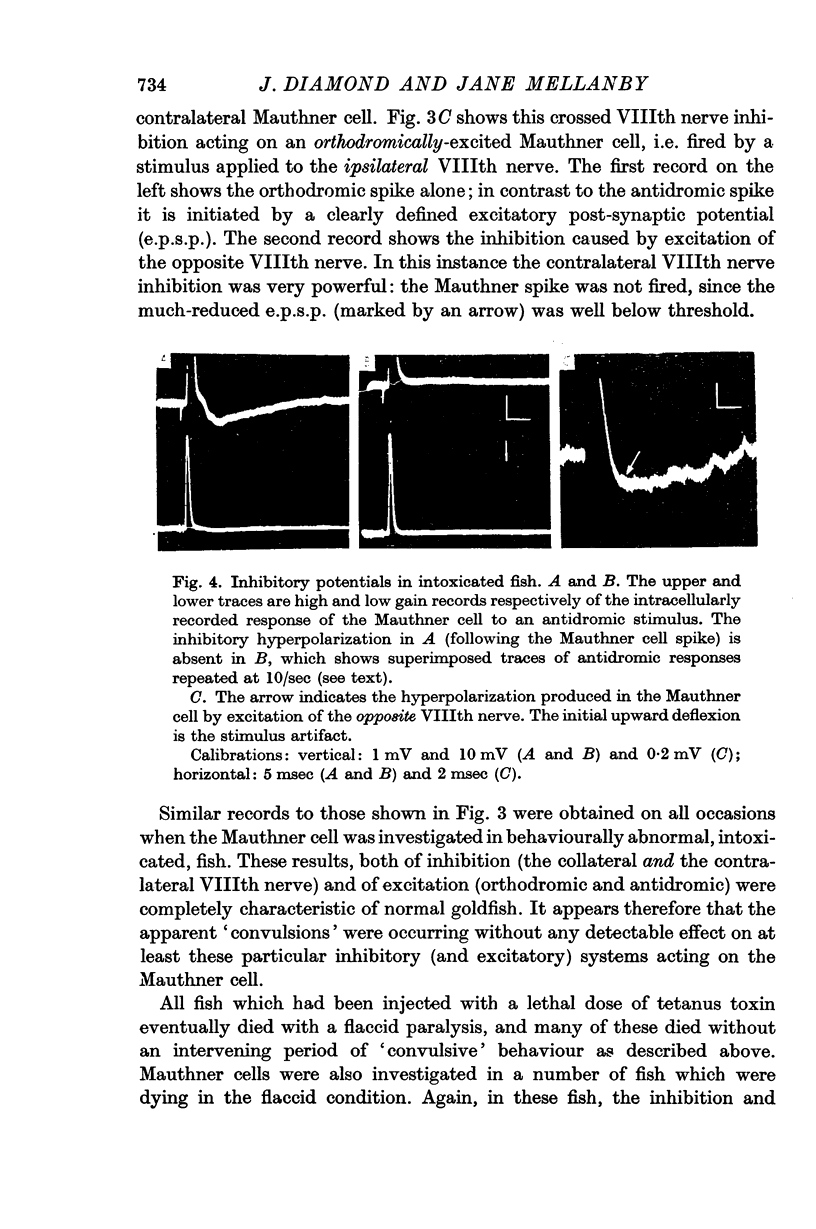
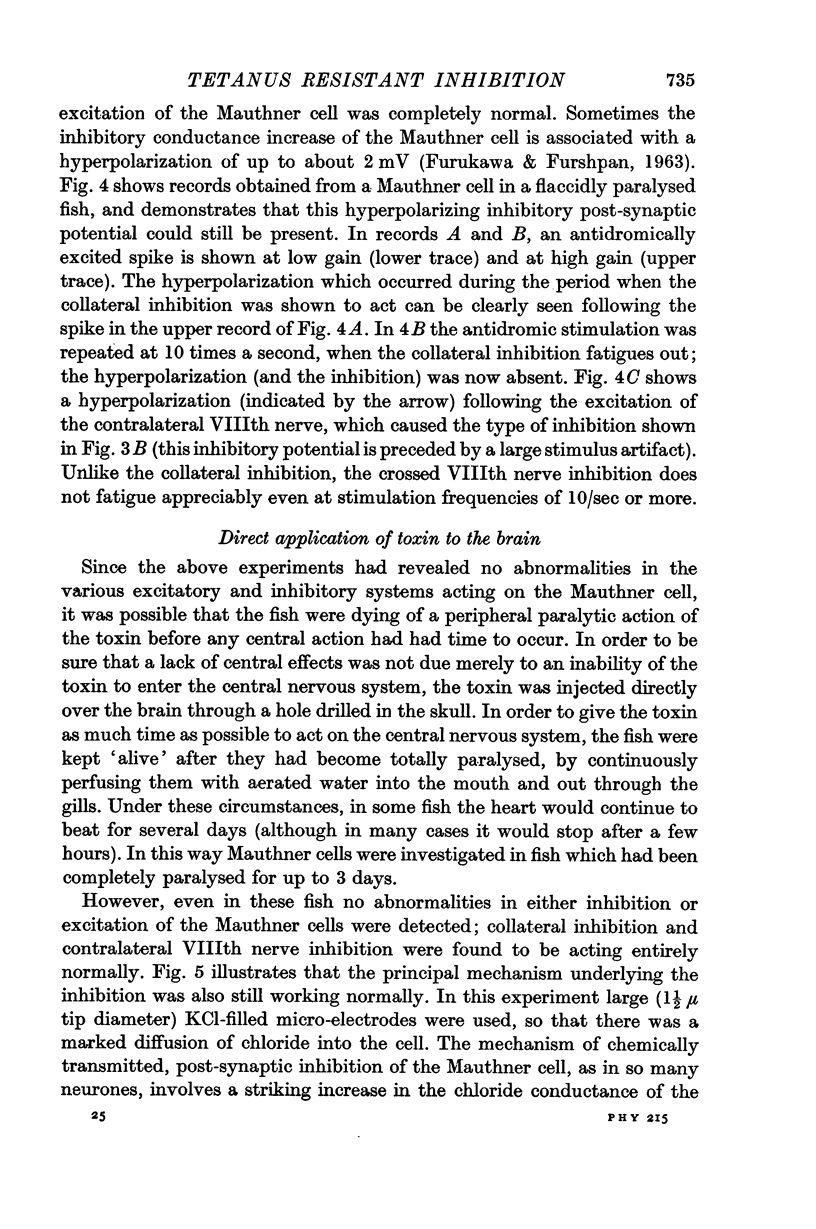


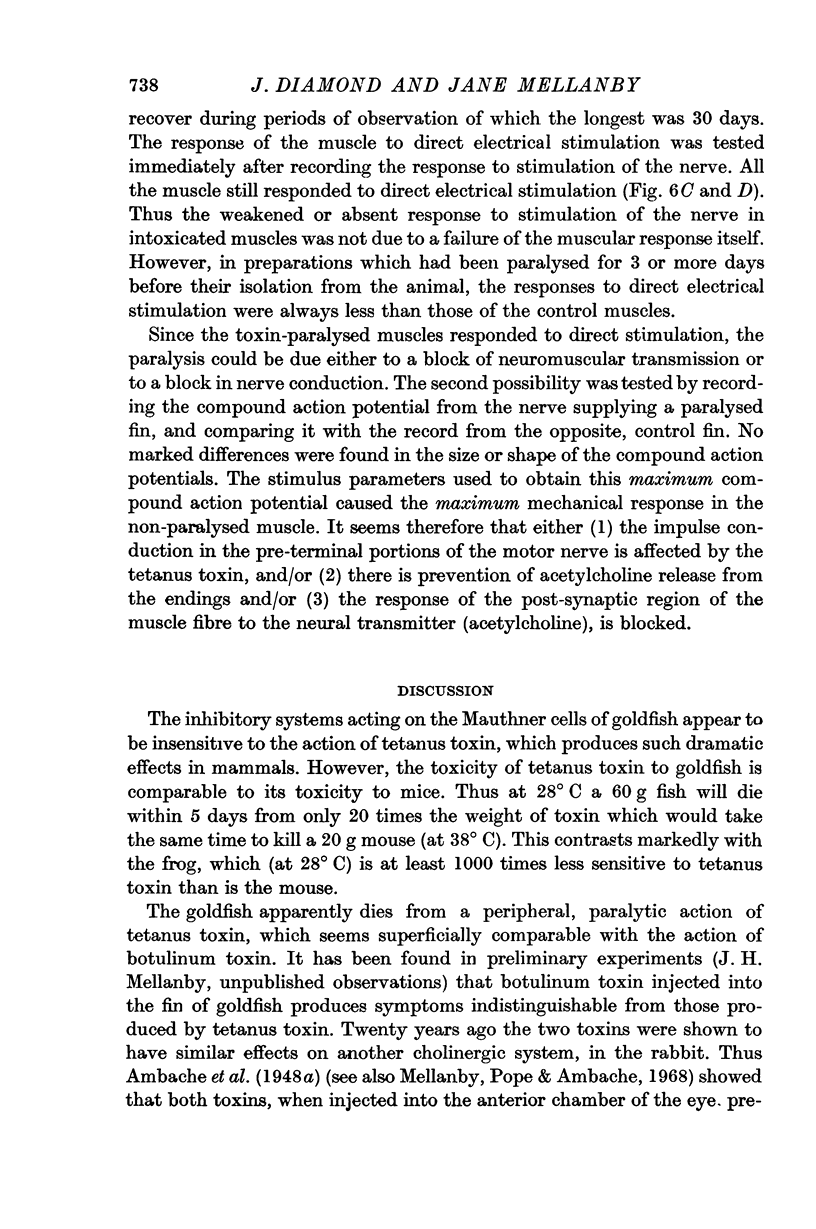
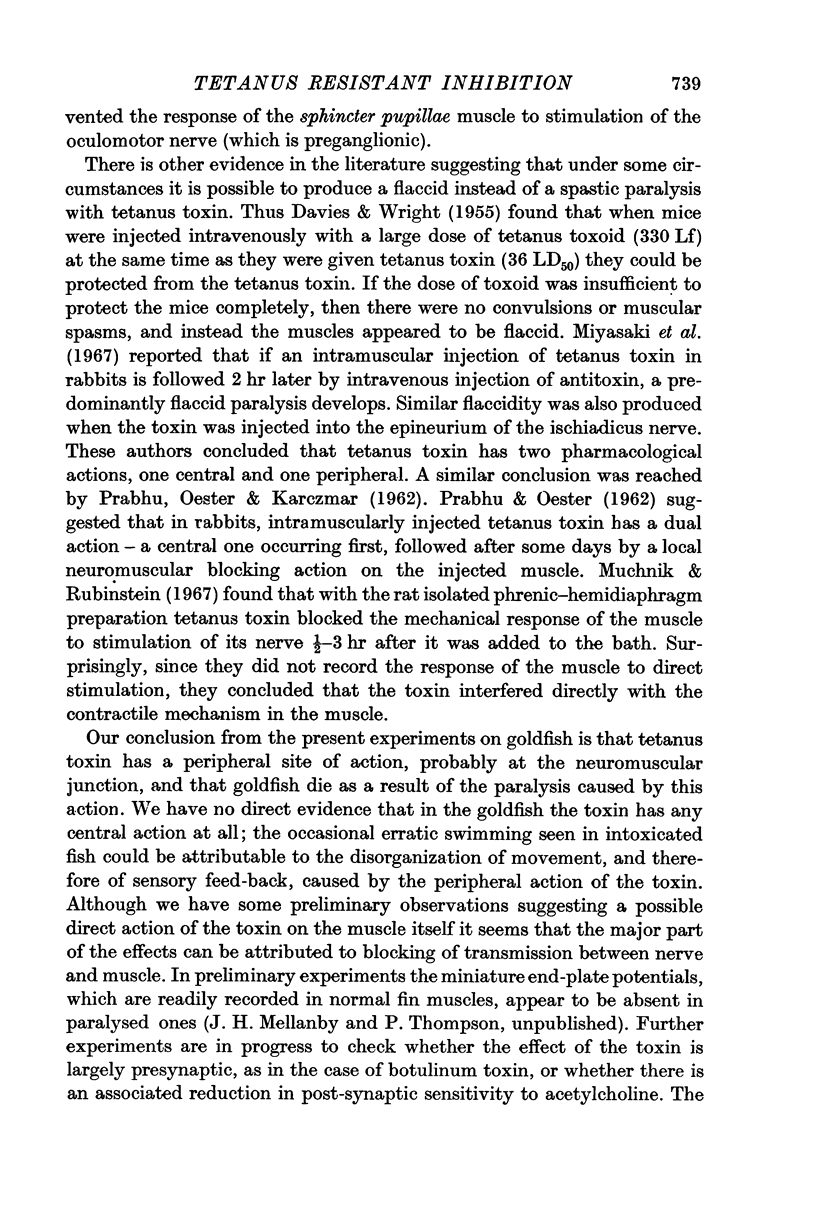

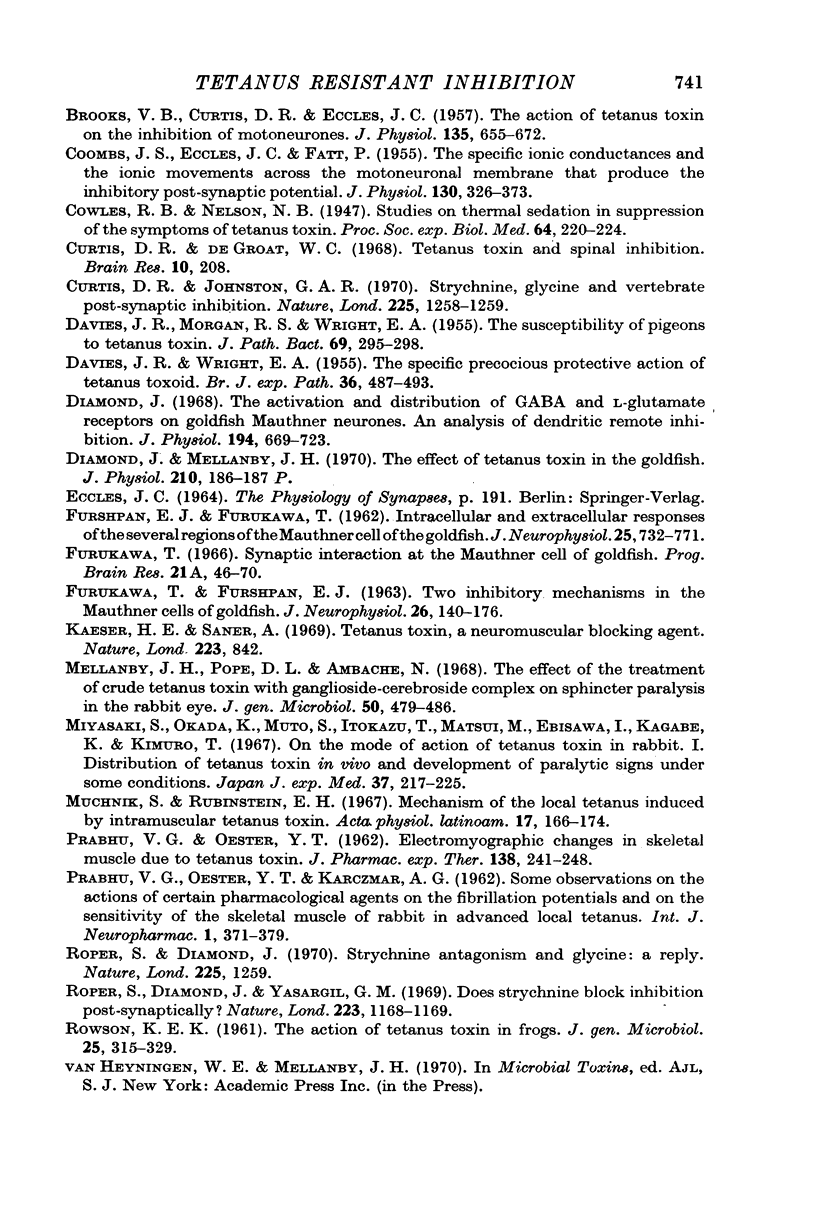
Selected References
These references are in PubMed. This may not be the complete list of references from this article.
- Ambache N., Morgan R. S., Wright G. P. The action of tetanus toxin on the rabbit's iris. J Physiol. 1948 Jan 1;107(1):45–53. doi: 10.1113/jphysiol.1948.sp004248. [DOI] [PMC free article] [PubMed] [Google Scholar]
- Ambache N. The peripheral action of Cl. botulinum toxin. J Physiol. 1949 Mar 15;108(2):127–141. [PMC free article] [PubMed] [Google Scholar]
- BROOKS V. B. An intracellular study of the action of repetitive nerve volleys and of botulinum toxin on miniature end-plate potentials. J Physiol. 1956 Nov 28;134(2):264–277. doi: 10.1113/jphysiol.1956.sp005642. [DOI] [PMC free article] [PubMed] [Google Scholar]
- BROOKS V. B., CURTIS D. R., ECCLES J. C. The action of tetanus toxin on the inhibition of motoneurones. J Physiol. 1957 Mar 11;135(3):655–672. doi: 10.1113/jphysiol.1957.sp005737. [DOI] [PMC free article] [PubMed] [Google Scholar]
- COOMBS J. S., ECCLES J. C., FATT P. The specific ionic conductances and the ionic movements across the motoneuronal membrane that produce the inhibitory post-synaptic potential. J Physiol. 1955 Nov 28;130(2):326–374. doi: 10.1113/jphysiol.1955.sp005412. [DOI] [PMC free article] [PubMed] [Google Scholar]
- Curtis D. R., De Groat W. C. Tetanus toxin and spinal inhibition. Brain Res. 1968 Aug 26;10(2):208–212. doi: 10.1016/0006-8993(68)90123-6. [DOI] [PubMed] [Google Scholar]
- Curtis D. R., Johnston D. A. Strychnine, glycine and vertebrate postsynaptic inhibition. Nature. 1970 Mar 28;225(5239):1258–1259. doi: 10.1038/2251258a0. [DOI] [PubMed] [Google Scholar]
- DAVIES J. R., MORGAN R. S., WRIGHT E. A. The susceptibility of pigeons to tetanus toxin. J Pathol Bacteriol. 1955 Jan-Apr;69(1-2):295–298. doi: 10.1002/path.1700690137. [DOI] [PubMed] [Google Scholar]
- DAVIES J. R., WRIGHT E. A. The specific precocious protective action of tetanus toxoid. Br J Exp Pathol. 1955 Oct;36(5):487–493. [PMC free article] [PubMed] [Google Scholar]
- Diamond J., Huxley A. F. The activation and distribution of GABA and L-glutamate receptors on goldfish Mauthner neurones: an analysis of dendritic remote inhibition. J Physiol. 1968 Feb;194(3):669–723. doi: 10.1113/jphysiol.1968.sp008432. [DOI] [PMC free article] [PubMed] [Google Scholar]
- FURSHPAN E. J., FURUKAWA T. Intracellular and extracellular responses of the several regions of the Mauthner cell of the goldfish. J Neurophysiol. 1962 Nov;25:732–771. doi: 10.1152/jn.1962.25.6.732. [DOI] [PubMed] [Google Scholar]
- FURUKAWA T., FURSHPAN E. J. Two inhibitory mechanisms in the Mauthner neurons of goldfish. J Neurophysiol. 1963 Jan;26:140–176. doi: 10.1152/jn.1963.26.1.140. [DOI] [PubMed] [Google Scholar]
- Furukawa T. Synaptic interaction at the mauthner cell of goldfish. Prog Brain Res. 1966;21:44–70. doi: 10.1016/s0079-6123(08)62971-4. [DOI] [PubMed] [Google Scholar]
- Kaeser H. E., Saner A. Tetanus toxin, a neuromuscular blocking agent. Nature. 1969 Aug 23;223(5208):842–842. doi: 10.1038/223842a0. [DOI] [PubMed] [Google Scholar]
- Mellanby J., Pope D., Ambache N. The effect of the treatment of crude tetanus toxin with ganglioside cerebroside complex on sphincter paralysis in the rabbit's eye. J Gen Microbiol. 1968 Mar;50(3):479–486. doi: 10.1099/00221287-50-3-479. [DOI] [PubMed] [Google Scholar]
- Miyasaki S., Okada K., Muto S., Iokazu T., Matsui M. [On the mode of action of tetanus toxin in rabbit. I. Distribution of tetanus toxin in vivo and development of paralytic signs under some conditions]. Jpn J Exp Med. 1967 Jun;37(3):217–225. [PubMed] [Google Scholar]
- Roper S., Diamond J. Strychnine antagonism and glycine: a reply. Nature. 1970 Mar 28;225(5239):1259–1259. doi: 10.1038/2251259a0. [DOI] [PubMed] [Google Scholar]
- Roper S., Diamond J., Yassargil G. M. Does strychnine block inhibition post-synaptically? Nature. 1969 Sep 13;223(5211):1168–1169. doi: 10.1038/2231168a0. [DOI] [PubMed] [Google Scholar]


